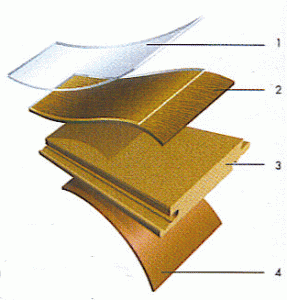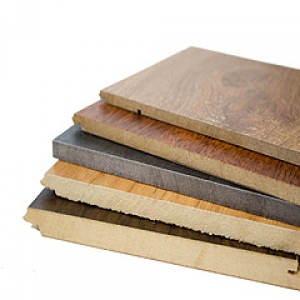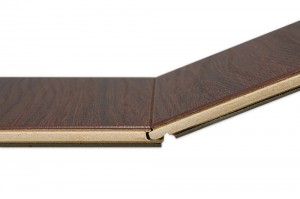We use cookies to make your experience better. To comply with the EU GDPR e-Privacy directive, we need to ask for your consent to set cookies. Learn more.
Latest Laminate Flooring Trends 2020 | Laminate Flooring Thickness Guide
Latest Laminate Flooring Trends 2020 | Laminate Flooring Thickness Guide
Choosing laminate flooring for your home can be a tough decision with all the options available in the market. Apart from the different designs, styles and colours that you can select from, one of the main factors that will influence your final decision and budget, is the plank thickness. Laminate flooring comes in a variety of thicknesses and if you are trying to figure out what each of them serves, then you are reading the right article.
Latest Laminate Flooring Trends 2020:-

How laminate flooring is made:
 To get a better understanding of the different plank thicknesses is vital to know how laminate flooring is made.
To get a better understanding of the different plank thicknesses is vital to know how laminate flooring is made.
Laminate flooring consists of four different layers. These are:
- The bottom layer: It is manufactured from melamine and protects the core layer from moisture.
- The core layer: Is made of medium or high-density fibreboard mixed with resins, to make it hard and stable.
- The photographic layer: This is the image bonded on top of the core layer, in order to give the floor it's natural appearance.
- The wear layer: This is the surface of the floor, the one you actually walk on. It is made of aluminum oxide or cellulose paper mixed with melamine resins.
These four layers pressed together under high heat, to form a laminate flooring. When we talk about laminate flooring thickness, we refer to the inner core part mentioned above.
- Note: Thickness is measured in millimeters.
Different thicknesses of laminate flooring:
Laminate flooring thickness ranges from 6mm to 12mm. The thicker the board, the more it will cost you. This doesn't mean though that it will be of better quality. The quality usually depends on the amount of wear layer that is sprayed over the photographic layer and the materials used for its manufacturing.

More specifically the different thicknesses available in the market are:
- 6 millimetres
- 7 millimetres
- 8 millimetres
- 10 millimetres
- 12 millimetres
Is laminate flooring thickness an indicator of durability?
Not really. Durability of laminate flooring depends on the quality of the wear layer, as it is the component that will determine how long the flooring will last. However, a 12mm laminate board has definitely a better chance to resist the impact of a dropped object. Additionally, thicker laminate flooring can stand up better to heavy traffic and is less likely to be warped or damaged from everyday use.
Benefits of a thicker laminate flooring board:
 Image courtesy by: builddirect.com
Image courtesy by: builddirect.com
Despite the fact that thinner laminate flooring will cost you less, it won't offer you the same advantages with a thicker board. Generally, the thicker the board, the greater the advantages.
- Thicker laminate flooring feels closer to a solid wood floor underfoot.
- It is easier to install and this makes it ideal for DIY projects. Why? Because it can handle easier minor subfloor variations.
- The thicker laminate board provides a better acoustic effect, as it makes it more difficult for the sound to travel.
- The locking system is stronger as it is thicker.
Deciding on laminate flooring thickness:
The decision on how to choose laminate flooring thickness should be based on a few factors. The main one to consider is how much money you are willing to spend on your laminate flooring. As I already mentioned, the thicker the board, the more a laminate will cost you.
Another variable you need to consider is how noisy is the place you live in. If you have noisy neighbours is better to invest in 12mm laminate flooring.
Of course, thicker is better for all the reasons explained in the above section, but before you buy it, make sure it works best for your situation.

